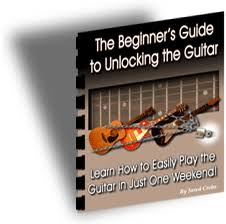Major Scale Patterns For Lead Guitar Improvisation
Guitar improvisation is a necessary facet of guitar playing as it will help you to master the various scales of lead guitar and allows you to play solo with ease.
Guitar improvisation can be divided into several categories that include using scales like the blues scale, minor and major pentatonic and many others as well as applying techniques like bends and tapping etc. Most of the guitarists end up spending their entire life trying to learn how to solo using only one or two different scales.
Most solo guitarists prefer the 5th and 12th frets but then this is not improvisation. Guitar improvisation uses much more scales covering the entire fretboard. The scales that can be used for guitar improvisation include: The Basic scales. There are mainly 5 basic scales that you as a lead guitarist should be able to play.
Learning the scales will help you in: Building up strength so that your fingers can work independently on the fretboard Playing these scales will help you to develop your ears in recognizing the basic note combinations You will be able to use different note choices for guitar improvisation as well as writing music
Once you are well-versed with the basic scales, you can move to the open position major scales.
Open position major scales
The open position major scales represent the 5 common keys for acoustic or electric guitar, which are C, G, D, A, E.
Minor pentatonic
The minor pentatonic is one of the major scales that is used extensively for guitar improvisation. It is also known as the king of all scales by many great guitarists of all times and they have been used repeatedly lead guitar improvisation. The minor pentatonic scale is also the most common scale used by rock, metal, alternative and blues bands. Penta stands for 5 and this means that there are 5 different notes in the minor pentatonic scale.
Blues scale
The blues scale is another major scale that is used extensively by blues guitarists. The blues scale is a type of minor pentatonic scale with an added note often called the blue note. This type of guitar improvisation helps in creating a little bit of tension that brings out the blues sound.
Major Scale Shapes
The major scale shapes should be studied by every lead guitarist as understanding it will help in guitar improvisation. This is also known as the CAGED scale system and is considered as among one of the corner stones of understanding the guitar neck or fretboard. - 18762
Guitar improvisation can be divided into several categories that include using scales like the blues scale, minor and major pentatonic and many others as well as applying techniques like bends and tapping etc. Most of the guitarists end up spending their entire life trying to learn how to solo using only one or two different scales.
Most solo guitarists prefer the 5th and 12th frets but then this is not improvisation. Guitar improvisation uses much more scales covering the entire fretboard. The scales that can be used for guitar improvisation include: The Basic scales. There are mainly 5 basic scales that you as a lead guitarist should be able to play.
Learning the scales will help you in: Building up strength so that your fingers can work independently on the fretboard Playing these scales will help you to develop your ears in recognizing the basic note combinations You will be able to use different note choices for guitar improvisation as well as writing music
Once you are well-versed with the basic scales, you can move to the open position major scales.
Open position major scales
The open position major scales represent the 5 common keys for acoustic or electric guitar, which are C, G, D, A, E.
Minor pentatonic
The minor pentatonic is one of the major scales that is used extensively for guitar improvisation. It is also known as the king of all scales by many great guitarists of all times and they have been used repeatedly lead guitar improvisation. The minor pentatonic scale is also the most common scale used by rock, metal, alternative and blues bands. Penta stands for 5 and this means that there are 5 different notes in the minor pentatonic scale.
Blues scale
The blues scale is another major scale that is used extensively by blues guitarists. The blues scale is a type of minor pentatonic scale with an added note often called the blue note. This type of guitar improvisation helps in creating a little bit of tension that brings out the blues sound.
Major Scale Shapes
The major scale shapes should be studied by every lead guitarist as understanding it will help in guitar improvisation. This is also known as the CAGED scale system and is considered as among one of the corner stones of understanding the guitar neck or fretboard. - 18762
About the Author:
Want over 1000 Guitar Backing Tracks? Visit Planet of Rock to improve your lead guitar playing and jam to professional live bands! These backing tracks allow you to jam at your own time and speed. Planet of Rock - For The Rock Star In You...




